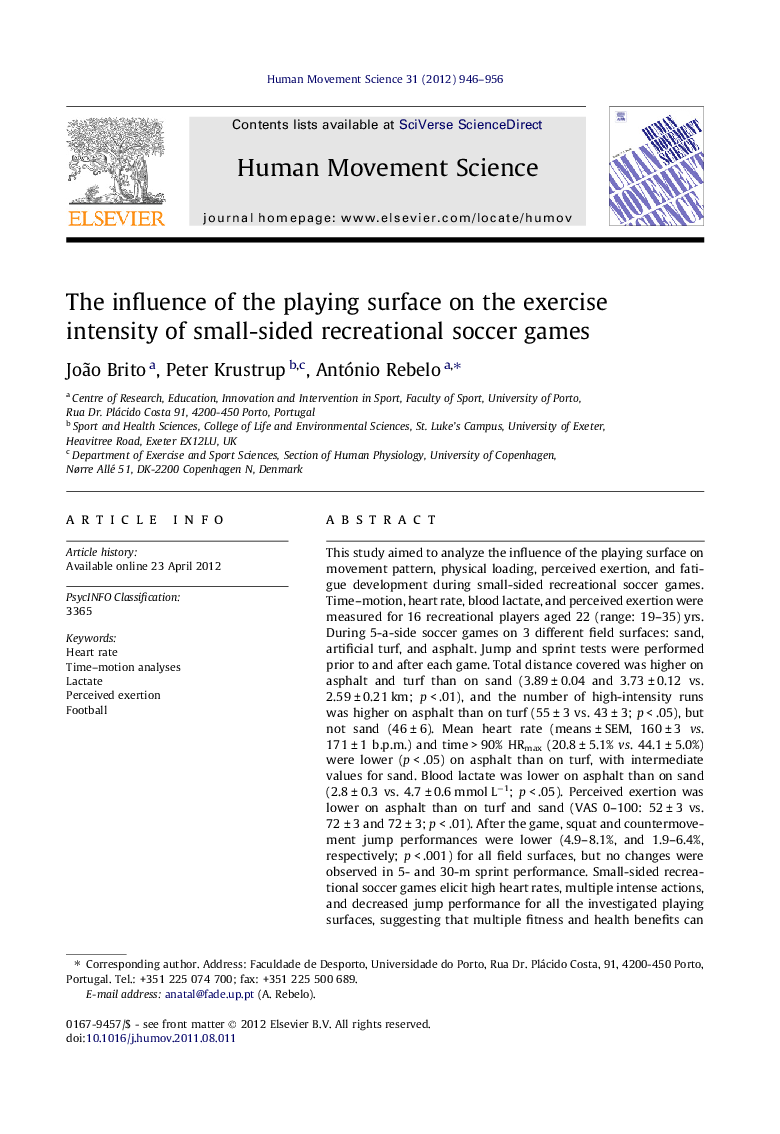| Article ID | Journal | Published Year | Pages | File Type |
|---|---|---|---|---|
| 928476 | Human Movement Science | 2012 | 11 Pages |
This study aimed to analyze the influence of the playing surface on movement pattern, physical loading, perceived exertion, and fatigue development during small-sided recreational soccer games. Time–motion, heart rate, blood lactate, and perceived exertion were measured for 16 recreational players aged 22 (range: 19–35) yrs. During 5-a-side soccer games on 3 different field surfaces: sand, artificial turf, and asphalt. Jump and sprint tests were performed prior to and after each game. Total distance covered was higher on asphalt and turf than on sand (3.89 ± 0.04 and 3.73 ± 0.12 vs. 2.59 ± 0.21 km; p < .01), and the number of high-intensity runs was higher on asphalt than on turf (55 ± 3 vs. 43 ± 3; p < .05), but not sand (46 ± 6). Mean heart rate (means ± SEM, 160 ± 3 vs. 171 ± 1 b.p.m.) and time > 90% HRmax (20.8 ± 5.1% vs. 44.1 ± 5.0%) were lower (p < .05) on asphalt than on turf, with intermediate values for sand. Blood lactate was lower on asphalt than on sand (2.8 ± 0.3 vs. 4.7 ± 0.6 mmol L−1; p < .05). Perceived exertion was lower on asphalt than on turf and sand (VAS 0–100: 52 ± 3 vs. 72 ± 3 and 72 ± 3; p < .01). After the game, squat and countermovement jump performances were lower (4.9–8.1%, and 1.9–6.4%, respectively; p < .001) for all field surfaces, but no changes were observed in 5- and 30-m sprint performance. Small-sided recreational soccer games elicit high heart rates, multiple intense actions, and decreased jump performance for all the investigated playing surfaces, suggesting that multiple fitness and health benefits can be achieved through soccer on sand, artificial turf and asphalt. Nonetheless, locomotor activities, heart rate, blood lactate levels, and perceived exertion differ between surfaces.
► Recreational small-sided soccer may provide significant fitness and health effects. ► Games are played at high aerobic intensity with periods of high anaerobic loading. ► The physical load of recreational soccer varies according to the playing surface. ► Recreational players may adapt the pace of the game according to the field surface.
